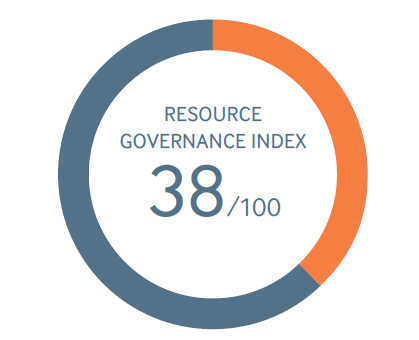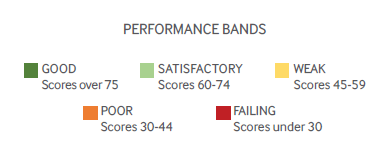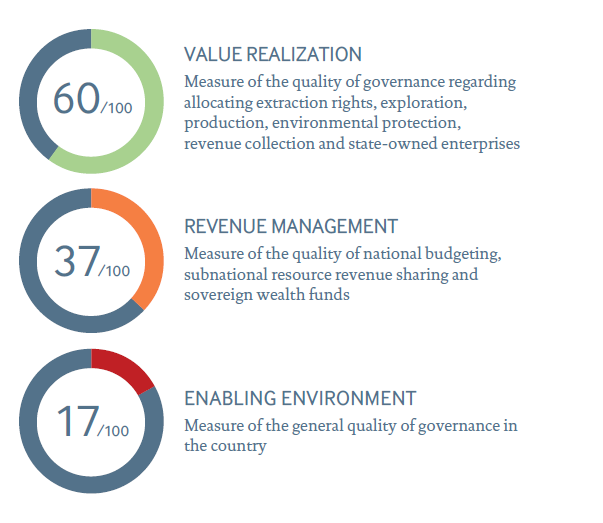
2021 Resource Governance Index: Democratic Republic of Congo (Oil and Gas)
Français »
The oil and gas sector of the Democratic Republic of Congo (DRC) scored 38 points in the 2021 Resource Governance Index (RGI), increasing by three points since the 2020 Interim Evaluation. This score, which places the oil and gas sector in the “poor” performance band of the RGI, results from rules and practices in each of the index’s three components: value realization (60 points), revenue management (37) and enabling environment (17).
Key messages:
- Since the 2020 Interim Evaluation, the DRC has not made significant progress in the management of its hydrocarbon sector.
- Gaps persist in the enforcement of established rules, especially around the publication of environmental and social impact assessments, environmental and social management plans and revenue sharing.
- The practices of the sector’s state-owned enterprise, SONAHYDROC, are opaque; neither its financial reports nor a code of conduct are publicly available. Its website was not operational in the period covered by this assessment.
- The DRC’s legal framework requires that the central government distributes 10 percent of oil revenues to producer communities to manage impacts. However, the central government is yet to share the revenues generated by oil activities.
NRGI recommends the following courses of action to improve oil and gas sector governance in the DRC:
To the Prime Minister
- Establish mechanisms and policies to control corruption in the hydrocarbon sector and its overall environment.
- Require audits and the publication of annual and financial reports.
- Introduce a rule to monitor public spending in relation to SONAHYDROC.
- Sign the decree on the creation, organization and operation of the oil fund for future generations, or clarify the reasons for the non-operationalization of this fund.
To the Minister of Hydrocarbons
- Disclose all contracts and annexed documents in accordance with the Hydrocarbons Code.
- Establish and keep updated an oil register in accordance with the Hydrocarbons Code, and make it publicly accessible.
- Apply the legal requirements for transparency of the criteria for submission and procedural rules when tendering for oil licenses.
- Publish quarterly disaggregated statements of payments received by government entities from the various oil companies, preferably by project and region.
- Disclose up-to-date oil statistics, disaggregated by project and type of payment flow on the Ministry’s website.
- Adopt a directive that incorporates into the legal framework for the hydrocarbon sector a requirement to disclose environmental impact studies and environmental and social management plans.
- Publish oil revenue projections.
- Require the publication of environmental impact study reports and management plans.
- Enforce the sanctions provided for by law in the event that the environmental impact study reports and management plans are not published on time.
- Publish data on the extractive sector’s reserves, production, exports and revenues on a single online portal data.
- Implement the transfer of 10 percent of oil revenues to producer communities for environmental impact management and define the implementation rules and management institutions.
To SONAHYDROC
- Publish project-related production and sales data.
- Disclose environmental impact studies and plans for dealing with the impacts of projects in which
- SONAHYDROC is involved.
- Publish full reports on non-commercial activities.
To DRC EITI
- Require the creation of a common portal for full statistical data on hydrocarbons.


